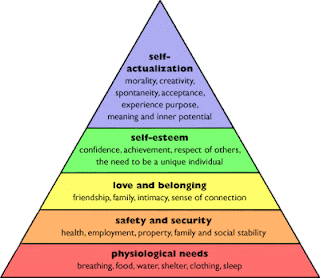Media Theories
Media Theories
Audience
The Hypodermic Needle Model
It was created in the 1920's and describes how the majority of people react to the media. It concluded how the audience are passive recipients who absorb information without questioning as if the media was the contents of a hypodermic needle, injecting knowledge into their brains. Due to the fact that the audience do not challenge what they are viewing, unmediated media can be passed on through the use of propaganda, which kickstarted in the 1920's because media became a new form of entertainment.
Two Step Flow
Creating a media product involves the social aspect of biased opinions through differences in peoples class, gender, ethnicity, etc. Once a piece of text is written that is then passed onto a group of 'opinion leaders' who use their own personal experience to influence other individuals' opinions on the media.
Uses & Gratifications
This theory suggests, unlike the hypodermic needle model, that the audience are active recipients of the mass media since they seek out only the aspects which have use to them. This theory was created in the 1960's as a diversion from family life to personal identity developed. This means that each individual no longer takes as much interest in the community, but rather in forming their own personal relationships and being successful themselves. Therefore, it is believed that people have their own opinions on subjects and thus search for content that appeals to them.
Reception
The reception theory was created in the 1980's and is based upon the fact that the audience, due to factors such as gender, class, age or ethnicity, interpret media differently. This allows the director to position the audience in either a place of negotiation or opposition through the use of codes and conventions of a particular genre in order to spark interest and an emotional response.
Ideology
Dominant/Hegemony
In society, the norms and values of the Bourgeoisie are passed down through the class system, and people feel as though they must 'fit in' and keep their objections quiet so follow this ruling class' opinion. Therefore the lower classes naturally consent to inequality 'us and them' and accept that the upper class lead. Through this, the media is able to challenge or maintain the inequality causing an emotional reaction from the audience.
Ideological Discourse
The mass media allows for raised issues to be debated in areas such as education, sexuality, crime, racism, politics or even environmentalism.
Narrative
Narrative is the way in which a story is told, and for the human brain to understand something it needs coherence, therefore a narrative must have an organised beginning middle and end structure. This allows us to connect and interpret events to discover meaning.
Barthes' Codes
Barthes suggested that texts may be open or closed meaning that they have multiple or only one meaning. These meanings are categorised into four different narrative codes; Answers & Questions, Symbols & Signs, Points of Cultural Preference and Simple Description/Reproduction.
Todorov's Theory
Tzvetan Todorov believed that most plot lines follow the same cyclic structure.
1) Equilibrium
The beginning of a media product has a joyful atmosphere where the majority of characters are content
2) Disruption
A problem arises which interrupts the happiness
3) Realisation
The other characters find out about the problem and chaos is created
4) Restored order
The character that initiated the chaos then attempts to repair the damage that has been done and restore equilibrium
5) Equilibrium again
The problem is resolved and normality is resumed, however there has been a transformation and this equilibrium is not identical to the initial one
Characters & Actions
Vladimir Propp stated that there are a set group of characters for every product that have specific duties. These include:
- Hero
- Villain
- Donor (provides an object)
- Dispatcher (sends the hero)
- False hero (disrupts hero's success)
- Helper
- Princess (reward)
- Princess' Father (aids rewarding the hero)
Binary Oppositions
Claude Levi-Strauss theorised that the characters of binary opposition reflect a society/culture's values, beliefs and myths.
Time
There are specific conventions followed by the media to represent time so that an audience can interpret this. For example we may use flashbacks, repetition, real time interludes, different characters' POVs, dream sequences, flash forwards or pre-figuring of events in post-production.












Comments
Post a Comment